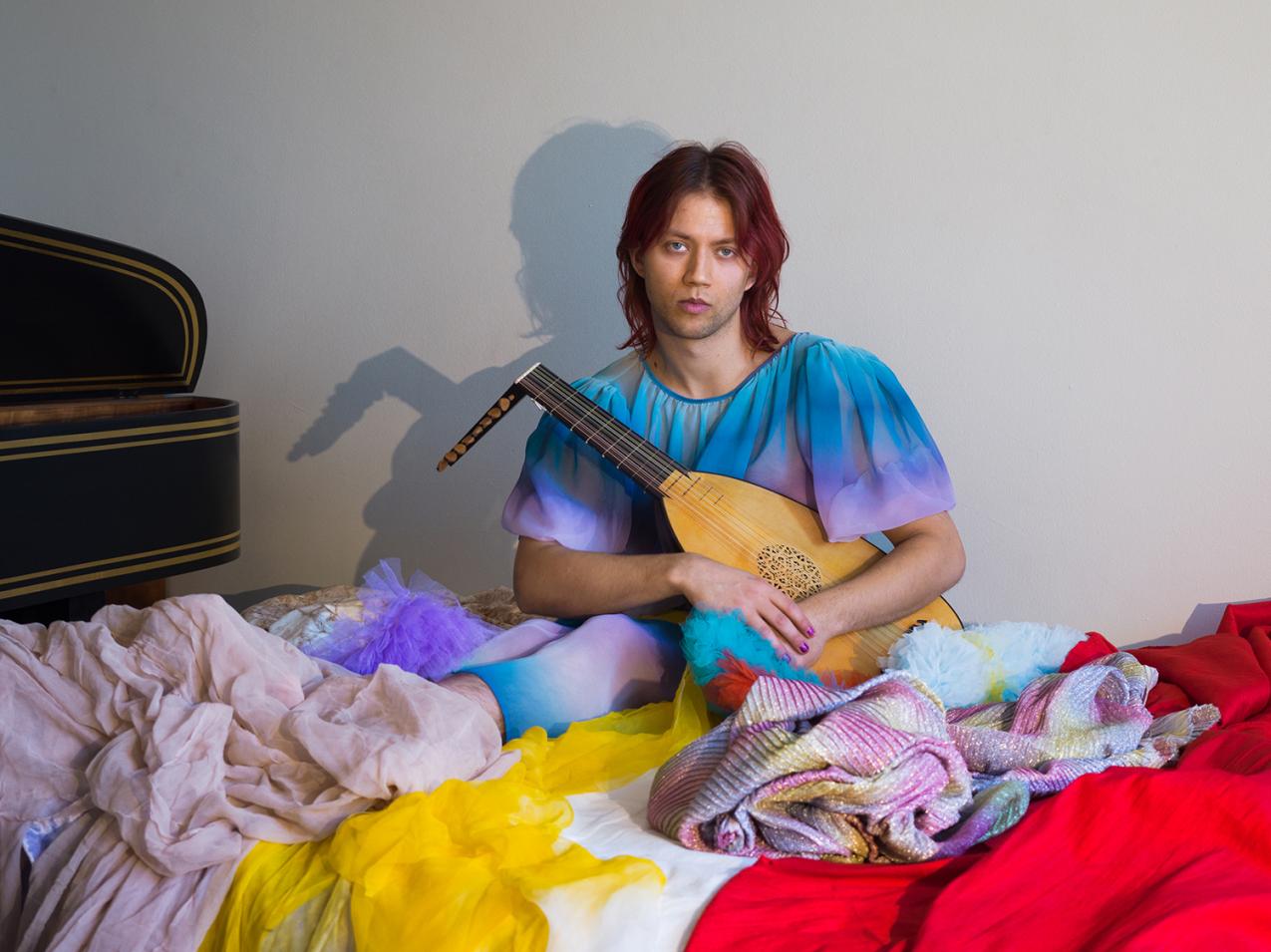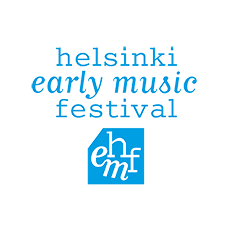Marianna Henriksson and Anna Mustonen continue their collaboration in bringing together the music of early Baroque and new dance. Eight musicians, five dancers and five singers reach towards each other at the large stage of Erkko Hall of Dance House Helsinki.
It is a reach that never quite arrives, bittersweet.
The ancient Greek word eros contains the notion of lack. Eros is the desire for something that is not present. As I attain it, my longing ceases. Distance is the prerequisite for erotic desire; it is moved by distance. Eros inserts itself between us and densifies the space between.
…electrified by desire so that they touch not touching -
In the performance, dance and music are often intertwined, sometimes at different tracks, continuously sharing the same space. Eight musicians, five dancers and five singers surrender to the fluctuating vibrations between dance and music. The dance and music yearn for each other, gently reaching towards one another.
- the way they intersect may feel like eros to you.
The choreography of the piece lies in the desire to approach, in the gestures of reaching out. It is dance from the moment touch has not yet taken place. It is about approaching when tentativeness and tension are allowed to be seen and the other is not taken into possession.
In early Italian Baroque music, eros is the prolonged desire of dissonances and suspensions to resolve towards consonances. Eros lies in the meaning of song lyrics intertwined with abrasions, projections and frictional reachings-out of the music. Sound fluctuates between us as vibration in the air, reaches the ear canals, and enters the body. A slight movement takes place.
For in this dance the people do not move. Desire moves. Eros is a verb.
Music: Biagio Marini - Claudio Monteverdi - Giovanni Felice Sances - Barbara Strozzi
Quotes: Anne Carson: Eros the Bittersweet (1986)
Credits
Assembling and concept: Marianna Henriksson and Anna Mustonen
Choreography: Anna Mustonen
Musical director, harpsichord and organ: Marianna Henriksson
Performers: Hanna Ahti, Mikko Hyvönen, Anna Kupari, Pie Kär and Eleni Pierides, dance;
Tuuli Lindeberg and Sirkku Rintamäki, soprano; Teppo Lampela, alto;
Juho Punkeri, tenor; Jussi Lehtipuu, bass;
Finnish Baroque Orchestra: Anne Pekkala and Hannu Vasara, violin; Hanna Pakkala, viola; Louna Hosia, cello; Anna Rinta-Rahko, violone; Jani Sunnarborg, dulcian; Eero Palviainen, lute and baroque guitar
Dramaturge: Masi Tiitta
Costume design: Piia Rinne
Lighting design: Heikki Paasonen
Sound design: Timo Kurkikangas
Producer: Riikka Thitz / i dolci
Internship / dancer: Iiris Miettinen (Danish National School of Performing Arts / Den Danske Scenekunstskole)
Lighting designer's assistant: Erno Seppälä (University of Arts Helsinki, Theatre Academy, VÄS)
Dressmaking: Veera Vuorisalo and Anneli Partanen
Airbrushing: Eija Koponen
Costume of Jussi Lehtipuu: Henrik Vibskov
Production: i dolci, Zodiak – Center for New Dance, Finnish Baroque Orchestra, Helsinki Early Music Festival
Supported by: Jenny and Antti Wihuri Foundation, Kone Foundation, Uusimaa Regional Fund of the Finnish Cultural Foundation, Arts Promotion Centre Finland
Residence: Santarcangelo dei Teatri (IT) / Finnish Cultural Foundation
Photo: Hertta Kiiski
Video teaser
Camera and editing: Alisa Javits
Music: Biagio Marini (1594–1663): Capriccio per sonare il violino con tre corde à modo di lira (excerpt).
Performed by Anne Pekkala, violin; Louna Hosia, cello; Anna Rinta-Rahko, violone; Eero Palviainen, theorbo, Marianna Henriksson, harpsichord; Jani Sunnarborg, organ
Recording and editing: Jussi Lehtipuu
PREMIERE
Complimentary material: Liquid Listening
Liquid Listening is a practice during which we explore how the music we’re listening to makes us feel. It might make you want to dance, move you, make you sleepy or relaxed – all sensations are equally true. You can do the practice anywhere you like. To begin the practice, take a comfortable position wherever you are.
Liquid Listening continues the collaboration between harpsichordist Marianna Henriksson and choreographer Anna Mustonen on early music and new dance. In the early 1600s, when early Baroque music was born, it was thought that the sound of vibrating air could affect the body by modifying the balance of its various fluids.
Henriksson and Mustonen collaborate to find a way to make these embodied notions of music visible and tangible in the present. According to them, listening to and playing music can manifest as dance, and this dance can be anything, including internal movement.
Liquid Listening has been produced within the Zodiak-nuoret (Zodiak Youth) project. The project is supported by Jane and Aatos Erkko Foundation.
Credits
Concept, performance and text: Marianna Henriksson & Anna Mustonen
Cinematography and editing: Sinem Kayacan / Zodiak
Costume design: Piia Rinne
Set assistant: Riikka Thitz
Voice over recording: Johannes Vartola / Zodiak
Music:
Michelangelo Rossi (1602–1656): Toccata Settima
Performed by Marianna Henriksson
Courtesy of SibaRecords


